Play is a Vagus Nerve Exercise! – The Joy of Doing What You Love as A Self-Care Practice
(The video provides a brief overview; read the article below for a more in-depth understanding.)
One thing that blocks our healing when we’re trying to recover from chronic illness is the expectations put on our time by modern cultures. For example, suppose you live in the United States, parts of Western Europe, Japan, or South Korea. In that case, there is pressure to use your time “correctly.” You have to be busy; you have to shove more in; you have to go faster; you have to keep up, whatever that means.
What is an antidote to our productivity obsession?
Allow me to introduce an antidote to the productivity obsession from a different culture. The Italian culture has a saying and a philosophy of life called Il Dolce Far Niente. It translates as “how sweet it is to do nothing.” The meaning is as follows: The joy of doing nothing means doing what you love instead of what you’re expected to/ should do. And in the Italian culture, it’s considered an art in itself, the art of enjoyment, indulging yourself in activities that nurture you.
“Beauty is truth, truth beauty,—that is all”, have you ever wondered how confident a poet can be to utter these memorable words?
-John Keats
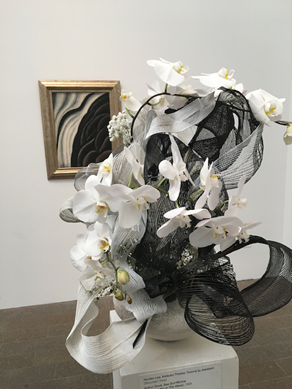
In contrast, in countries like the US, we tend to worry about moving forward and being constantly productive. As a result, taking time to relax is only rarely encouraged. For example, I took an online course for productivity and goal setting several years ago. When I announced to the group that one of my goals was to spend an hour every evening doing nothing, the shocked responses of the other students and the instructor made me feel that I had said I would rob a bank every night. Which is crazy, isn’t it? An hour, I mean, it’s not that long, but they were horrified. Oh, my God, you’re not going to be productive! I had sinned against the God of productivity!
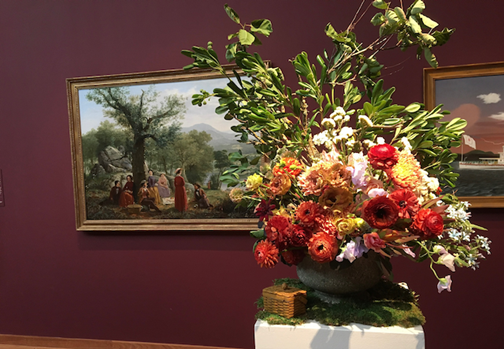
Enjoying beauty as a form of play and self-care
In contrast, I’ll share a self-care practice under the philosophy of Il Dolce Far Niente. One of my favorite ways to do nothing: is to observe and enjoy beauty. Every year the de Young Museum in San Francisco hosts an event where floral artists create arrangements in response to a beautiful piece of art in the museum’s permanent collection. The floral bouquets are placed in front of the art piece, inviting the public to experience these responses. The flower arrangements are an artistic response to a work of art.
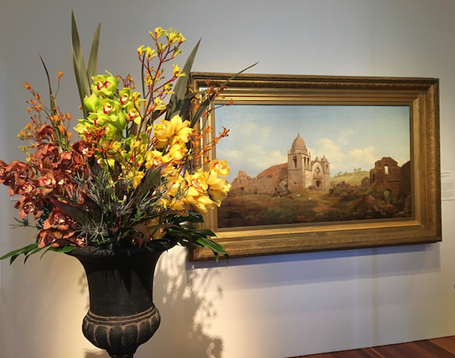
I love participating in this expression and exploration of meaning through beauty. Truth and beauty are classical concepts from the Greco-Roman culture. They believed that being in the presence of truth and beauty was healing.
“Truth, goodness, and beauty are cosmic values that communicate divine meaning to the intellectual, moral, and aesthetic capacities of the human soul, which brings a balance in the soul, which, in turn, harmonizes the human person with divine meaning and purpose of the cosmos, which was considered the prerequisite to human flourishing.”
-Stephen R. Turley
I enjoy the exhibit with friends and family, and we all dress up for the occasion. The relationship between the flowers and the artwork is inspiring. One of the things I’ve noticed through the years is that my favorite flower arrangements almost always involve a Japanese floral artist. And that’s no surprise to me because I’m a fan of Japanese art. The aesthetic sense in Japanese culture is exceptionally refined, much like the Italians. Both traditions are age-old and include a sense of dynamic balance, harmony, and beauty. The Japanese are very skilled at understated beauty.
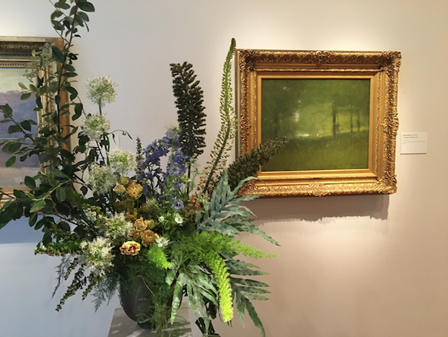
Honoring yourself is not trying to shove more doing into your life
So think about it for yourself. How could you excel at doing nothing rather than trying to squeeze more into your life? And allow me to review this concept one more time. The art of doing nothing isn’t trying to figure out how to shove more into a time slot. It’s about discovering what speaks to you and what you enjoy that feeds your spirit. When I go to the museum, it’s an all-day affair. Everyone gets dressed up, and we take our time and enjoy the artwork. After viewing the exhibit, we often go to the cafe to enjoy a meal while discussing the experience.
Taking the time and savoring what you love is not trying to shove more tasks into the day. Instead, it honors the importance of the event in the way you dress, the way you behave, and the time you set aside for it. So think about your life; what are the things you miss or long for that would be in the category of doing what you love rather than what you should do? And how can you honor yourself by clearing out time for activities you love? I’m not saying you must dress up; that’s my thing. Instead, you will make time and space to enjoy your nurturing activities, fully attend to them, and take them in without guilt.
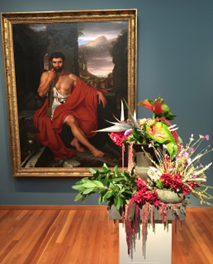
The guilt is something I have to work on. Sometimes, when viewing the art, I’ll have a moment where I think, Oh my God, I’ve got all these things I should do. Luckily, I’ve gotten better at managing myself. I put my concerns aside and say to the voice in my head, “I’m enjoying this right now, we’re fine, and you can relax.
Therefore, think of how you can practice Il Dolce Far Niente in your own life. Choose an activity that feels like a gift instead of a chore. Set aside time and thoroughly enjoy it. Watch out for the tendency to shove more in and to judge yourself for not being productive. Self-care activities like this will help you be better in your personal life and work because you’ll be able to show up with your tank full.
Doing what you love and the vagus nerve, what’s the connection?
Essentially the vagus nerve acts as an information superhighway connecting the brain in your head and the brain in your gut. These two brains work together through the vagus nerve to adjust your physiology to optimize your chances of surviving and thriving. For a detailed explanation of how the vagus nerve and your three brains work together to keep you alive, please watch this video Why is the Vagus Nerve so Important to Your Health?
Safe connection is the key to health and happiness
Vagal exercises aim to optimize the tone that travels through the vagus nerve back and forth between the brain and the gut. When you optimize the tone, it allows you to have more stress tolerance. When the vagal tone goes up, it tames the primitive impulses of fight-flight, freeze, and shutdown and converts them to energies you can utilize from a safe, centered place in your nervous system. Consequently, when you feel safe in your environment, it allows you to access the traits of a civilized human. As a result, you feel more compassion, have more success combining rational thought with intuition for decision-making, and are more socially successful.
Suppose you want to understand why a vagal exercise works. In that case, it’s essential to grasp that vagal exercises target the part of the nervous system you use to communicate with others, called the social engagement system. Therefore, activities to consider are engaging your face, voice, hearing, heart, lungs, and body posture. These exercises can help shift the low tone of your vagus (associated with responses to danger/ life threat) to a high tone (that supports safe social bonding, higher brain states, and healing).
For a more detailed explanation of how a vagal exercise changes vagal tone check out my video series on chronic pain.
